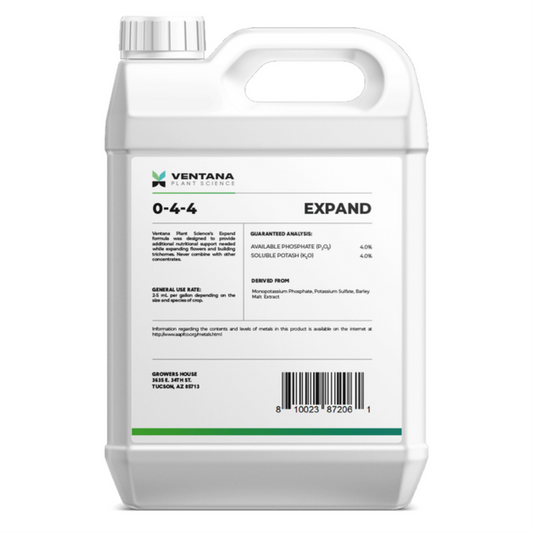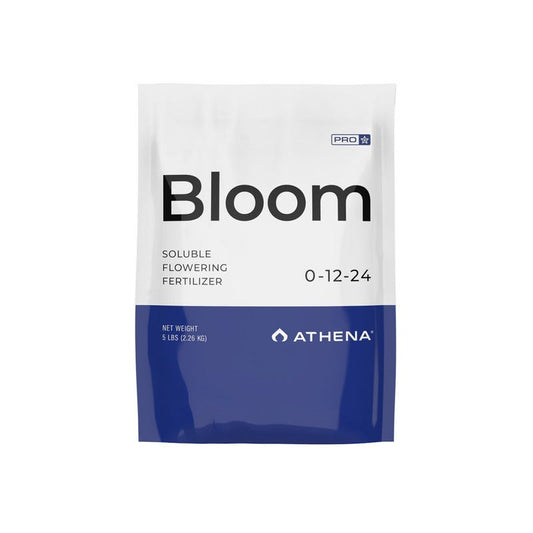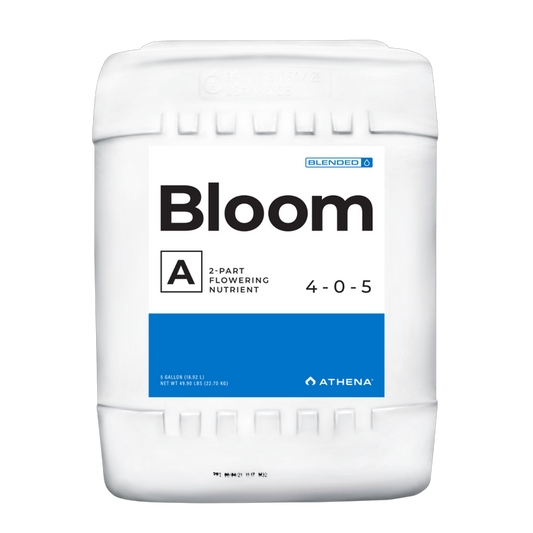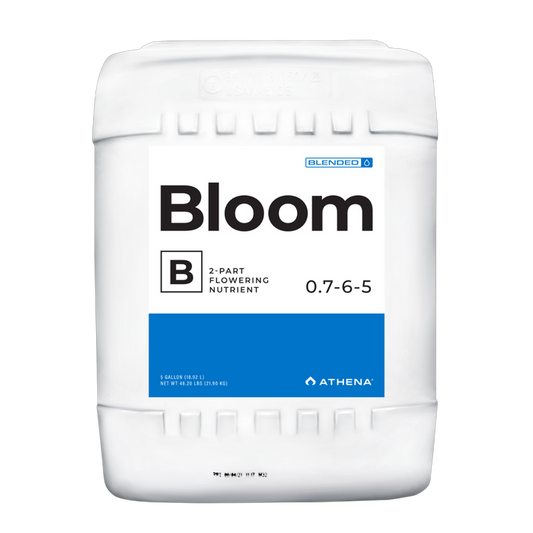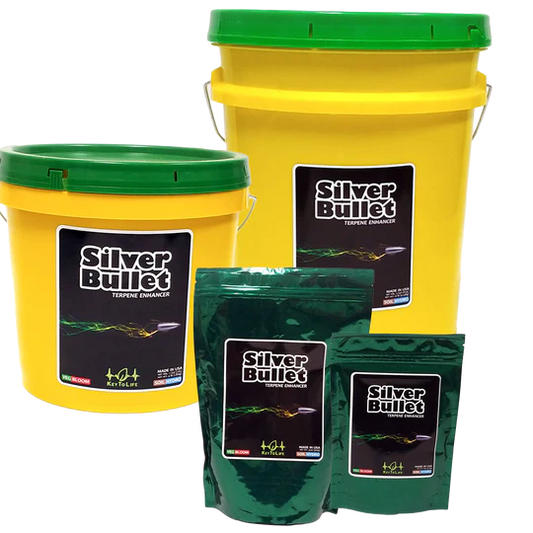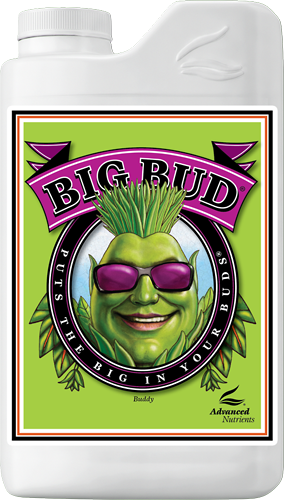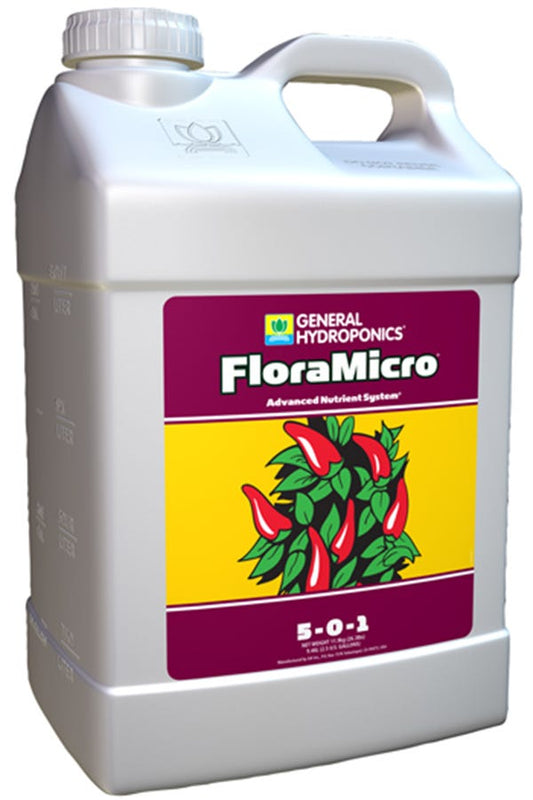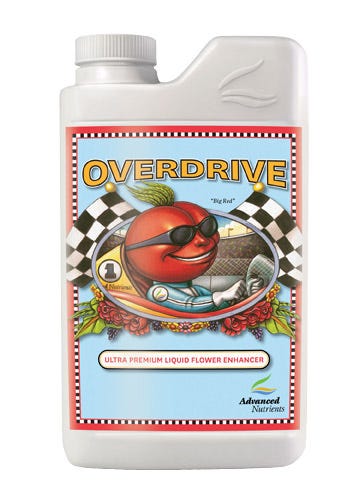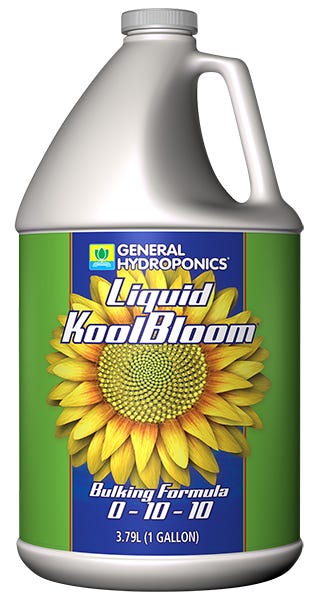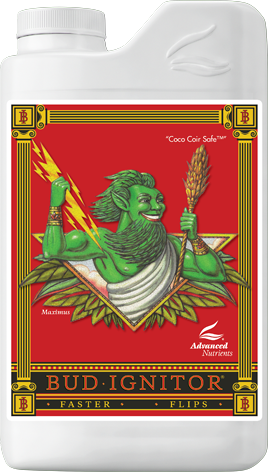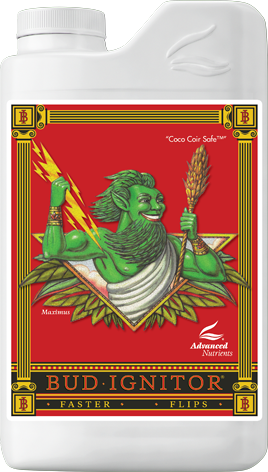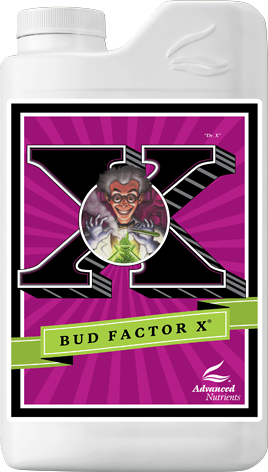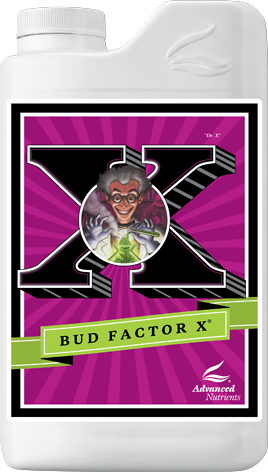Micronutrients + Biostimulants
Elevate flowering performance with Micronutrients + Biostimulants for hydroponics and CEA. These PK boosters, chelated traces, and bioactive formulas enhance nutrient uptake, stabilize EC/PPM, and improve stress resistance for consistent, high-quality yields.
-
Ventana Plant Science - Expand 0-4-4 (Flower Booster)
Vendor:Ventana Plant ScienceRegular price From $25.00 USDRegular priceUnit price / per$25.00 USDSale price From $25.00 USDVentana Plant Science - Expand 0-4-4 (Flower Booster)
Regular price From $25.00 USDRegular priceUnit price / per$25.00 USDSale price From $25.00 USDVentana Plant Science - Expand 0-4-4 (Flower Booster)
Regular price From $25.00 USDRegular priceUnit price / per$25.00 USDSale price From $25.00 USD -
Athena Pro - Bloom 0-12-24
Vendor:AthenaRegular price From $77.00 USDRegular priceUnit price / per$77.00 USDSale price From $77.00 USDAthena Pro - Bloom 0-12-24
Regular price From $77.00 USDRegular priceUnit price / per$77.00 USDSale price From $77.00 USDAthena Pro - Bloom 0-12-24
Regular price From $77.00 USDRegular priceUnit price / per$77.00 USDSale price From $77.00 USD -
Athena Blended - Bloom A (4-0-5)
Vendor:AthenaRegular price From $31.50 USDRegular priceUnit price / per$31.50 USDSale price From $31.50 USDAthena Blended - Bloom A (4-0-5)
Regular price From $31.50 USDRegular priceUnit price / per$31.50 USDSale price From $31.50 USDAthena Blended - Bloom A (4-0-5)
Regular price From $31.50 USDRegular priceUnit price / per$31.50 USDSale price From $31.50 USD -
Athena Blended - Bloom B (0.7-6-5)
Vendor:AthenaRegular price From $31.50 USDRegular priceUnit price / per$31.50 USDSale price From $31.50 USDAthena Blended - Bloom B (0.7-6-5)
Regular price From $31.50 USDRegular priceUnit price / per$31.50 USDSale price From $31.50 USDAthena Blended - Bloom B (0.7-6-5)
Regular price From $31.50 USDRegular priceUnit price / per$31.50 USDSale price From $31.50 USD -
Key To Life - Silver Bullet - Terpene Enhancer
Vendor:Key to LifeRegular price From $64.14 USDRegular priceUnit price / per$99.58 USDSale price From $64.14 USDKey To Life - Silver Bullet - Terpene Enhancer
Regular price From $64.14 USDRegular priceUnit price / per$99.58 USDSale price From $64.14 USDKey To Life - Silver Bullet - Terpene Enhancer
Regular price From $64.14 USDRegular priceUnit price / per$99.58 USDSale price From $64.14 USDSale -
Key To Life - Green9 6-0-0
Vendor:Key to LifeRegular price From $269.38 USDRegular priceUnit price / per$269.38 USDSale price From $269.38 USDKey To Life - Green9 6-0-0
Regular price From $269.38 USDRegular priceUnit price / per$269.38 USDSale price From $269.38 USDKey To Life - Green9 6-0-0
Regular price From $269.38 USDRegular priceUnit price / per$269.38 USDSale price From $269.38 USD -
Key To Life - Key to Boost
Vendor:Key to LifeRegular price From $24.85 USDRegular priceUnit price / per$24.85 USDSale price From $24.85 USDKey To Life - Key to Boost
Regular price From $24.85 USDRegular priceUnit price / per$24.85 USDSale price From $24.85 USDKey To Life - Key to Boost
Regular price From $24.85 USDRegular priceUnit price / per$24.85 USDSale price From $24.85 USD -
Big Bud Liquid - Advanced Nutrients
Vendor:Advanced NutrientsRegular price From $25.89 USDRegular priceUnit price / per$36.50 USDSale price From $25.89 USDBig Bud Liquid - Advanced Nutrients
Regular price From $25.89 USDRegular priceUnit price / per$36.50 USDSale price From $25.89 USDBig Bud Liquid - Advanced Nutrients
Regular price From $25.89 USDRegular priceUnit price / per$36.50 USDSale price From $25.89 USDSale -
General Hydroponics FloraBloom 0-5-4
Vendor:General HydroponicsRegular price From $25.23 USDRegular priceUnit price / perGeneral Hydroponics FloraBloom 0-5-4
Regular price From $25.23 USDRegular priceUnit price / perGeneral Hydroponics FloraBloom 0-5-4
Regular price From $25.23 USDRegular priceUnit price / per -
General Hydroponics FloraMicro 5-0-1
Vendor:General HydroponicsRegular price From $25.54 USDRegular priceUnit price / perGeneral Hydroponics FloraMicro 5-0-1
Regular price From $25.54 USDRegular priceUnit price / perGeneral Hydroponics FloraMicro 5-0-1
Regular price From $25.54 USDRegular priceUnit price / per -
Advanced Nutrients - Tasty Terpenes - Previously Known as Nirvana
Vendor:Advanced NutrientsRegular price From $21.77 USDRegular priceUnit price / per$23.03 USDSale price From $21.77 USDAdvanced Nutrients - Tasty Terpenes - Previously Known as Nirvana
Regular price From $21.77 USDRegular priceUnit price / per$23.03 USDSale price From $21.77 USDAdvanced Nutrients - Tasty Terpenes - Previously Known as Nirvana
Regular price From $21.77 USDRegular priceUnit price / per$23.03 USDSale price From $21.77 USDSale -
Overdrive - Advanced Nutrients
Vendor:Advanced NutrientsRegular price From $24.04 USDRegular priceUnit price / per$33.91 USDSale price From $24.04 USDOverdrive - Advanced Nutrients
Regular price From $24.04 USDRegular priceUnit price / per$33.91 USDSale price From $24.04 USDOverdrive - Advanced Nutrients
Regular price From $24.04 USDRegular priceUnit price / per$33.91 USDSale price From $24.04 USDSale -
General Hydroponics - Liquid KoolBloom - 0-10-10
Vendor:General HydroponicsRegular price From $17.81 USDRegular priceUnit price / per$11,638.95 USDSale price From $17.81 USDGeneral Hydroponics - Liquid KoolBloom - 0-10-10
Regular price From $17.81 USDRegular priceUnit price / per$11,638.95 USDSale price From $17.81 USDGeneral Hydroponics - Liquid KoolBloom - 0-10-10
Regular price From $17.81 USDRegular priceUnit price / per$11,638.95 USDSale price From $17.81 USDSale -
Advanced Nutrients - Bud Ignitor
Vendor:Advanced NutrientsRegular price From $55.90 USDRegular priceUnit price / per$78.85 USDSale price From $55.90 USDAdvanced Nutrients - Bud Ignitor
Regular price From $55.90 USDRegular priceUnit price / per$78.85 USDSale price From $55.90 USDAdvanced Nutrients - Bud Ignitor
Regular price From $55.90 USDRegular priceUnit price / per$78.85 USDSale price From $55.90 USDSale -
Advanced Nutrients - Bud Factor X
Vendor:Advanced NutrientsRegular price From $62.53 USDRegular priceUnit price / per$88.20 USDSale price From $62.53 USDAdvanced Nutrients - Bud Factor X
Regular price From $62.53 USDRegular priceUnit price / per$88.20 USDSale price From $62.53 USDAdvanced Nutrients - Bud Factor X
Regular price From $62.53 USDRegular priceUnit price / per$88.20 USDSale price From $62.53 USDSale -
House & Garden Shooting Powder
Vendor:House & GardenRegular price $10.18 USDRegular priceUnit price / per
Micronutrients + Biostimulants
Boost plant health with our Micronutrients + Biostimulants collection at GrowersHouse. Purpose-built for greenhouses, indoor farms, and vertical growing systems, these advanced solutions deliver essential micronutrients and targeted biostimulants to optimize plant growth, improve stress resistance, and maximize yields. Often called PK boosters or PK nutrient additives, these products support flower formation, density, and finish quality during the flowering phase by supplying highly available phosphorus (P) and potassium (K) alongside key trace elements. Micronutrients and biostimulants complement your base program to drive vigorous growth, tighter internodes, and reliable performance across cycles. Clean, highly soluble formulations help stabilize EC/PPM, prevent precipitation, and keep irrigation hardware running smoothly while reinforcing overall crop vigor ...
How This Collection Helps Growers
From small hobby tents to high-throughput CEA facilities, these additives help you fine-tune nutrition with precision. Elevated P and K backfill peak metabolic demand in mid-to-late flower, while biostimulants enhance nutrient uptake, photosynthetic efficiency, and stress tolerance—supporting uniform canopies, consistent quality metrics, and repeatable SOPs.
Key Benefits
- Faster correction of transient deficiencies (P, K, Fe, Zn, Mn, Cu, B, Mo)
- Improved flower set, bulking, and finish density in the flowering window
- Enhanced nutrient availability and uptake (chelates, organic acids, amino support)
- More stable EC/PPM and fewer compatibility issues in reservoirs and lines
- Stronger stress resilience (heat, VPD swings, salinity) and overall plant vigor
Best Uses
- Mid–late flowering to drive formation, ripening, and desired density
- Correcting low P or K without overhauling the base feed
- Fine-tuning trace elements in RO or low-alkalinity water programs
- Supporting recovery after environmental or irrigation stress events
Types of Micronutrients & Biostimulants
- PK Additives (P–K boosters): Concentrated phosphorus and potassium for flower development and finish quality.
- Chelated Micronutrients: Fe, Mn, Zn, Cu, B, Mo in chelated forms for high solubility and reliable uptake.
- Biostimulants: Kelp/seaweed extracts, humic & fulvic acids, amino acid complexes, beneficial enzyme blends to enhance nutrient use efficiency and stress tolerance.
- Forms: Powder or liquid; highly available when derived from mineral and purified sources, designed for easy mixing and consistent dosing.
Frequently Asked Questions
What is the difference between biostimulants and micronutrients?
Micronutrients are essential trace elements (like iron, manganese, zinc, copper, boron, and molybdenum) that plants require in small amounts for core physiological processes. Biostimulants are compounds or extracts (e.g., kelp, humic/fulvic acids, amino acids, enzymes) that enhance nutrient use efficiency, root activity, and stress tolerance. Used together, they improve availability and uptake while helping plants perform consistently under varying conditions.
What micronutrients are needed for hydroponics?
Common hydroponic micronutrients include Fe, Mn, Zn, Cu, B, and Mo—often supplied in chelated forms for higher solubility and stable uptake across a range of pH values. Balanced trace packages prevent chlorosis, weak growth, and poor flowering, particularly when using RO or very soft water.
Which is the best biostimulant?
“Best” depends on your goal and system. Kelp/seaweed supports chlorophyll production and stress resilience; humic/fulvic acids improve cation exchange and nutrient mobility; amino acids can aid enzyme function and recovery; enzyme blends help keep media and lines cleaner. Many growers combine a PK additive with one or two biostimulants that fit their crop stage and irrigation strategy.
Is potassium or phosphorus more important for flowering?
Both are crucial but play different roles. Phosphorus supports energy transfer (ATP), flower initiation, and root metabolism, while potassium regulates osmotic balance, enzyme activation, and carbohydrate movement that drives bulking and finish. A balanced P:K ratio—aligned with your base nutrient—delivers the best results.
Why are potassium and phosphorus important for plant growth?
Phosphorus powers energy processes and supports rooting and floral development; potassium enhances water regulation, stomatal function, and overall metabolic efficiency. Together, they help maintain strong growth momentum, efficient photosynthesis, and the density and quality targets growers seek in the flowering window.



